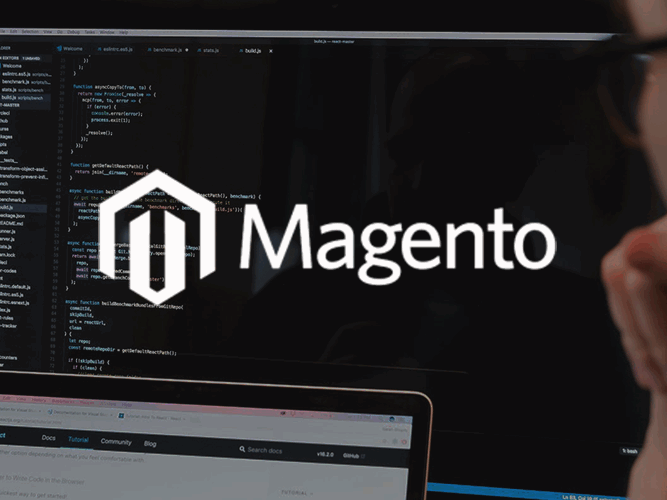by Fatema Mulla
Magento 1 End of Life is on the way and merchants of the platform will soon have to face the reality of whether they need to replatform and move their store elsewhere, or not.And while there may still be some time before support for Magento 1 is ceased, acting now and beginning the replatforming process as early as possible will ensure your store remains secure and functional.
Magento 1 End of Life is on the way and merchants of the platform will soon have to face the reality of whether they need to replatform and move their store elsewhere, or not.
And while there may still be some time before support for Magento 1 is ceased, acting now and beginning the replatforming process as early as possible will ensure your store remains secure and functional.
And while replatforming may be a difficult process to begin with, it can actually open up many different and exciting opportunities for you.
Here are some of our top tips for merchants replatforming from Magento 1...
1. Scope Out Your Project Carefully
Replatforming from one eCommerce platform to another requires careful thought and planning. Before you switch over, think about all the different aspects of your replatforming project, your aims and goals, and carefully curate plans for each different stage of the project.
Plan each aspect carefully, including the timescales for the switch, the resources you’ll need and the investment required. You’ll also need to take into account other important aspects such as data migration, moving over assets, technical requirements etc.
2. Consider Your Platform Choice
Possibly the most important choice to make when replatforming is choosing the right platform to move to. This can differ massively based on the type of store you have, the size of your business, the capabilities of your current developer/s, the requirements for your store, and the budget you may have for your replatforming project.
While it may make sense to move to Magento 2, it may not exactly be the solution you are looking for. The platform is more complex than its predecessor and Magento 2 is also fairly new, so in essence you will still be replatforming when moving from Magento 1 to Magento 2
A popular choice for people who replatform from Magento 1 is Shopify - a desired option for many due to the platforms security, reasonable pricing plans, functionality, and more. You can take a look at our specific guide on replatforming from Magento 1 to Shopify here.
3. Map Your Requirements to Your New Platform
Before replatforming, take some time to think about the requirements for your store and what exactly you need from the platform you’re moving to. The platform you choose to switch to will differ in functionality from Magento 1, so you’ll need to ensure it fits any and all requirements you have.
Features, discounting, bundling, content, security, integrations, marketing, design etc. are just some of the different aspects you’ll have to take into account and carefully consider before replatforming.
Does the platform you’re moving to provide you with high security features? Does it integrate well with the apps and add-ons you use? Does it give you a wide range of customisable themes and designs to choose from?
4. Have a Plan For…
It’s important to ensure that you have all the different stages of your replatforming process carefully planned out. What happens before and after the migration stage is just as important as what happens during migration.
Pre-Migration:
Before migrating, it’s vital to ensure all your assets are secure and are ready to be moved over. Take some time to fully understand your site and its requirements, and ensure you have taken this on board when identifying your new platform.
During Migration:
During the transition, keep an eye on everything to ensure it’s all running smoothly, and the replatforming process is going as well as expected.
Post-Migration:
Check (and double check) to make sure the migration process has gone as expected and all data has been switched over correctly. Thoroughly test your site on your new platform to make sure everything works as expected. Make sure you have a checklist on-hand (such as our pre-launch testing checklist) and follow this.
5. Take Time to Integrate Your 3rd Party Systems
Integrating your 3rd party systems with your new platform requires time.
Replatforming may be the perfect time to consider alternatives for your 3rd party systems, especially if they are a little outdated and may not integrate well with your chosen platform.
Moving to a different platform means you’ll now be faced with the opportunity to switch to 3rd party systems offered by your new platform provider that may be a much better and reasonable fit for you - whether this is warehouse management, marketing systems, CRMs etc.
6. Use a Platform Expert
To successfully replatform your store, it would be a good idea to hire a platform expert to guide you through the process and ensure everything runs smoothly.
Ensure that the team you choose are highly trained and can handle the scope of your replatforming project. This will minimise the risk of any issues arising, as they will be highly experienced with such projects.
Statement are a team of dedicated Shopify Plus Partners who have worked with a wide range of online retailers to replatform to either Shopify or Shopify Plus.
If you’d like to know more about our services and how we can help to replatform your store, just get in touch with our friendly team and we’ll be happy to help.
